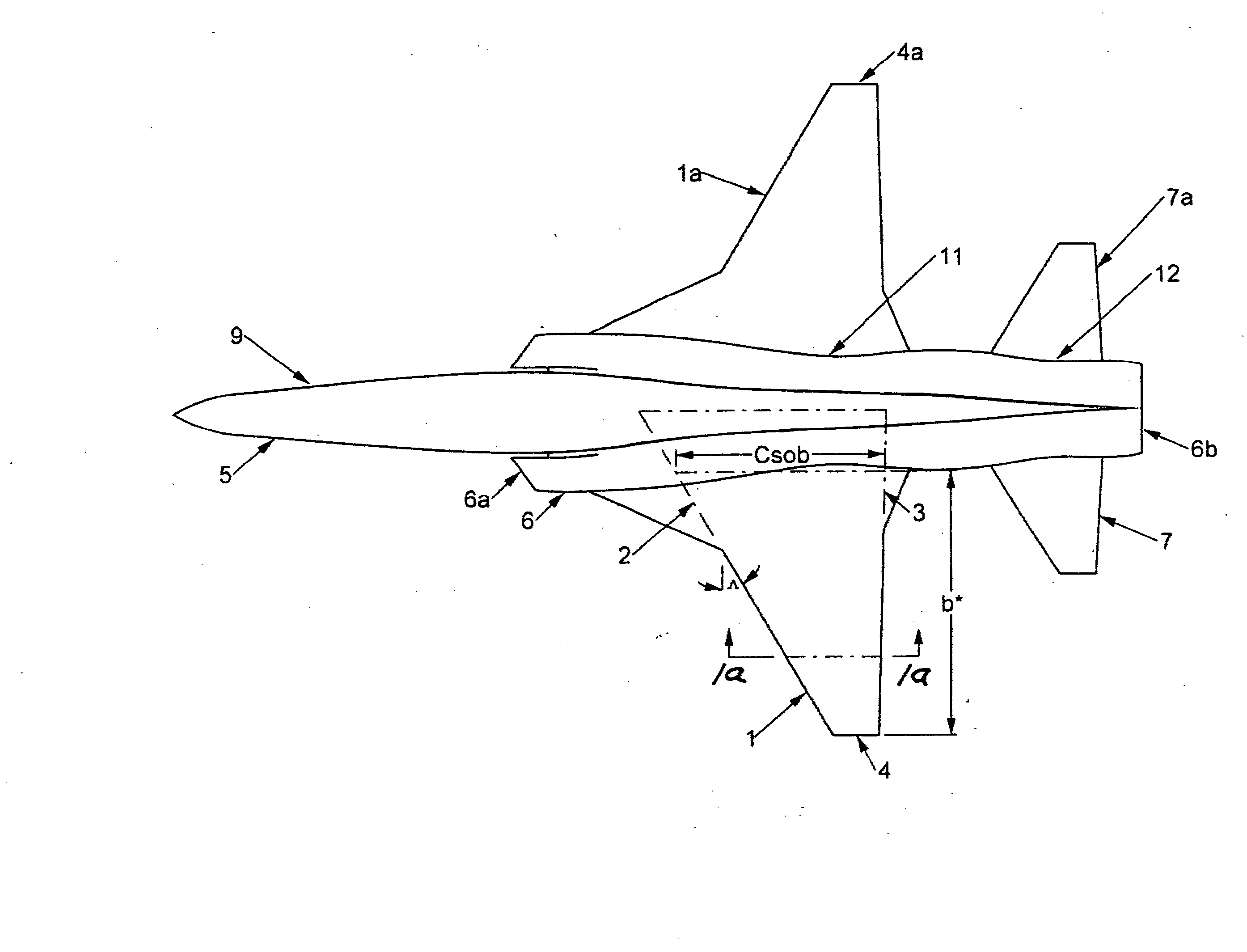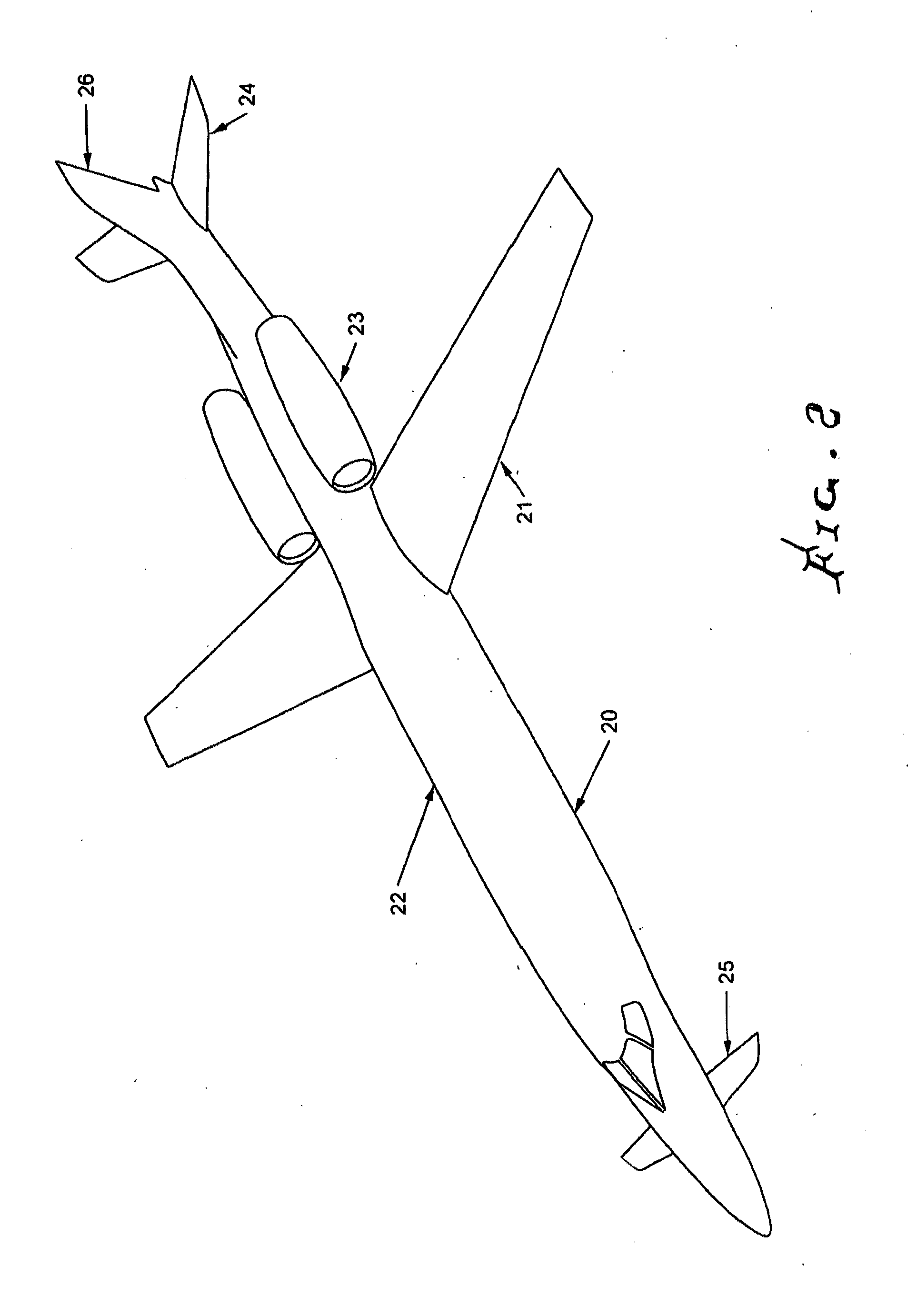Laminar flow wing optimized for transonic cruise aircraft
a technology of transonic cruise aircraft and wing, which is applied in the direction of fuselage, wing shape, transportation and packaging, etc., can solve the problems of increasing load, requiring the incorporation of additional structural materials with added weight, and limited span and minimum thickness desired for aerodynamic efficiency
- Summary
- Abstract
- Description
- Claims
- Application Information
AI Technical Summary
Problems solved by technology
Method used
Image
Examples
Embodiment Construction
[0036]In FIG. 1 an aircraft 9 incorporating the invention is illustrated as including a fuselage 5, a powerplant nacelle 6 including inlet and exhaust ends 6a and 6b, a tail 7 and a wing 1, two wing portions being shown, an integrated body / nacelle is illustrated but the invention applies also to conventional civil aircraft incorporating separate engine nacelles mounted on the wing or fuselage.
[0037]The trapezoidal wing as commonly defined with a theoretical root chord defined by the outboard leading edge 2 and outboard trailing edge 3 projected to the aircraft centerline is illustrated. The usual definition of aerodynamic aspect ratio is the square of the total span (length of the trapezoidal wing from tip 4 to tip 4a) divided by the area enclosed in the indicated trapezoidal area. The leading edge sweep angle ̂ is defined as the minimum angle of the outboard trapezoidal wing leading edge 2 relative to a line projected normally from the aircraft longitudinal axis outboard.
[0038]A ch...
PUM
 Login to View More
Login to View More Abstract
Description
Claims
Application Information
 Login to View More
Login to View More - R&D
- Intellectual Property
- Life Sciences
- Materials
- Tech Scout
- Unparalleled Data Quality
- Higher Quality Content
- 60% Fewer Hallucinations
Browse by: Latest US Patents, China's latest patents, Technical Efficacy Thesaurus, Application Domain, Technology Topic, Popular Technical Reports.
© 2025 PatSnap. All rights reserved.Legal|Privacy policy|Modern Slavery Act Transparency Statement|Sitemap|About US| Contact US: help@patsnap.com



